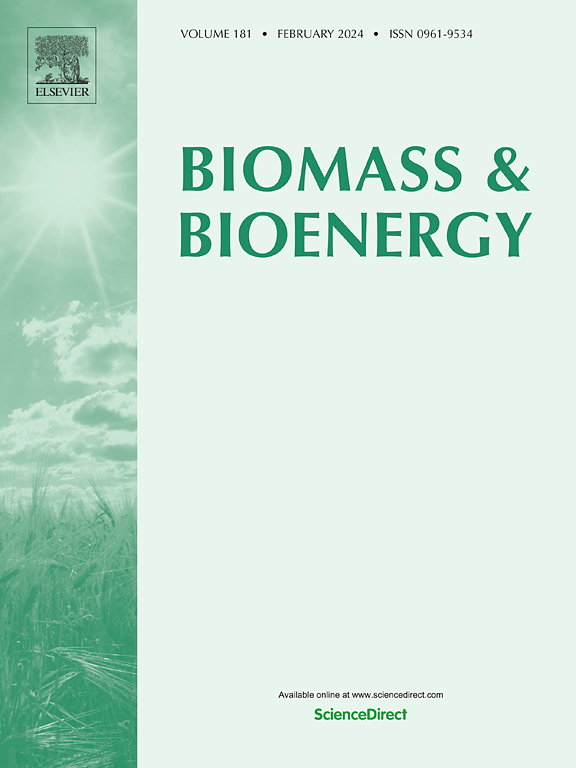Techno-economic evaluation of pulp and paper mill derived biochar, liquid and gaseous biofuel precursors: A British Columbia case study
IF 5.8
2区 生物学
Q1 AGRICULTURAL ENGINEERING
引用次数: 0
Abstract
Canada is home to one of the largest concentrations of pulp and paper (P&P) mills in the world. With declining demand for traditional P&P products and tightening environmental regulations, these mills are diversifying to produce a range of biorefinery products. Mill residue derived solid biochar, liquid and gaseous biofuel precursors are potential biorefinery products that can help mills sustain operations, as well as meet emission reduction targets in other “hard-to-decarbonize” industries such as petroleum refining and iron and steelmaking. This study undertook a techno-economic analysis of fast pyrolysis of wood residues to produce low-carbon intensity biofuels at operating P&P mills in British Columbia (BC). Aspen Plus® models for fast pyrolysis of wood residue with a novel three-stage quench and heat recovery were integrated into an Excel-based cost estimation tool, which was used to perform techno-economic analysis (TEA) for ablative and fluid-bed reactor configurations. The ablative case outperformed the fluid-bed case, under baseline conditions of 4 dry t/h capacity, 60 $/dry t wood residue, 800 $/t char, WCS crude and RNG pricing for the bio-oil and off-gas respectively. TEA showed a net present value (NPV) of USD 4.30 million, and a bio-oil minimum selling price (MSP) of 7.86 USD/GJ for the ablative pyrolysis case, while the fluid-bed case was unprofitable, requiring a bio-oil MSP of 23.47 USD/GJ. Lowering feedstock cost and increasing biochar and liquid price increased the profitability of both pyrolysis cases, whereas increasing throughput capacity increased profitability in the ablative case but lowered it in the fluid-bed case.

求助全文
约1分钟内获得全文
求助全文
来源期刊

Biomass & Bioenergy
工程技术-能源与燃料
CiteScore
11.50
自引率
3.30%
发文量
258
审稿时长
60 days
期刊介绍:
Biomass & Bioenergy is an international journal publishing original research papers and short communications, review articles and case studies on biological resources, chemical and biological processes, and biomass products for new renewable sources of energy and materials.
The scope of the journal extends to the environmental, management and economic aspects of biomass and bioenergy.
Key areas covered by the journal:
• Biomass: sources, energy crop production processes, genetic improvements, composition. Please note that research on these biomass subjects must be linked directly to bioenergy generation.
• Biological Residues: residues/rests from agricultural production, forestry and plantations (palm, sugar etc), processing industries, and municipal sources (MSW). Papers on the use of biomass residues through innovative processes/technological novelty and/or consideration of feedstock/system sustainability (or unsustainability) are welcomed. However waste treatment processes and pollution control or mitigation which are only tangentially related to bioenergy are not in the scope of the journal, as they are more suited to publications in the environmental arena. Papers that describe conventional waste streams (ie well described in existing literature) that do not empirically address ''new'' added value from the process are not suitable for submission to the journal.
• Bioenergy Processes: fermentations, thermochemical conversions, liquid and gaseous fuels, and petrochemical substitutes
• Bioenergy Utilization: direct combustion, gasification, electricity production, chemical processes, and by-product remediation
• Biomass and the Environment: carbon cycle, the net energy efficiency of bioenergy systems, assessment of sustainability, and biodiversity issues.
 求助内容:
求助内容: 应助结果提醒方式:
应助结果提醒方式:


